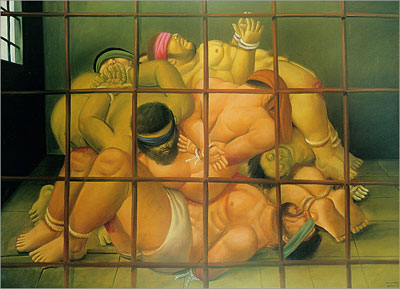During the 19th century, a tradition of rendering post-mortem images was revived through the medium of photography (Figure 1).

The recording of memorial likenesses had traditionally fallen to the field of painting where large numbers appeared in both the United States and Europe. The death-bed portrait, whether a painting or a photograph, was the last chance a family had of keeping the memory of a loved one alive. While this was certainly a common motive for capturing these moments, some of the photographs differ from their painted counterparts in how death was portrayed. For example, when one examines post-mortem paintings, one usually observes a child depicted as alive. Often times, the only clue death has occurred is the presence of symbols whose meanings vary according to the society represented. In Figure 2 and 3 painted by William Sidney Mount’s son, Shepard Alonzo Mount, in 1868 we see two such examples. Both Camille and Nicholas are plump, happy, and alive. Each painting incorporates symbols that tell the viewer the painting is in fact a memorial portrait and not one depicting life. In Figure 2 a pocket watch rests on the ground probably indicating the time of death of young Camille. In Figure 3, we see the inclusion of a painted backdrop depicting weeping willows and a ship floating on calm water. The foreground depicts the child plucking flowers from the potted plant. A rose held downward or the presence of morning glories both indicate a life cut short. A boat floating on calm water symbolizes an easy death, whereas stormy water symbolizes the opposite. The weeping willow is an obvious indicator of the sadness that has transpired


Early post-mortem photographs share the impulse to show life instead of death by depicting the deceased in a variety of poses. Oftentimes, the body is depicted outside of the coffin (Figures 4, 5, 6 and 7).

Sometimes, parents of the deceased hold their children in their laps and arms, (Figure 5). Other times bodies are propped in chairs as if they are carrying on a conversation or reading from a book or newspaper (Figure 6). For example in Figure 7 we see a post-mortem photograph of a young woman sitting up with her eyes open, holding a book. For the most part, even though there is the allusion to life through the posing of the individual, the bodies are noticeably dead.




In later post-mortem images, subjects are depicted in a more formulaic manner. The subject is represented in either a close-up or full-length body shot. Sometimes the camera is positioned directly over the body looking down onto it, as is the case in Figure 8 and in Figure 9

but more times than not, the camera is positioned at the same level as the body, emphasizing the face and its importance as a soon-to-be-cherished memory (Figure 9).

Symbols like the ones represented in Figure 2 and Figure 3 are noticeably absent, with the exception of flowers that are common fixtures in many of these images. There is much more focus on portraying the dead as resting peacefully. Color is even added to the image to disguise the evidence of death. There were obviously exceptions to this from time to time. For example, photographers oftentimes found themselves arriving to make the death-bed portrait after the body had been prepared, which, as you can imagine, made for stiff, un-lifelike photographs (Figures 7 and 11).

Bodies that could not be photographed in time were occasionally exhumed for the very purpose of facing the camera. That is what is so disturbing about Figure 12.











